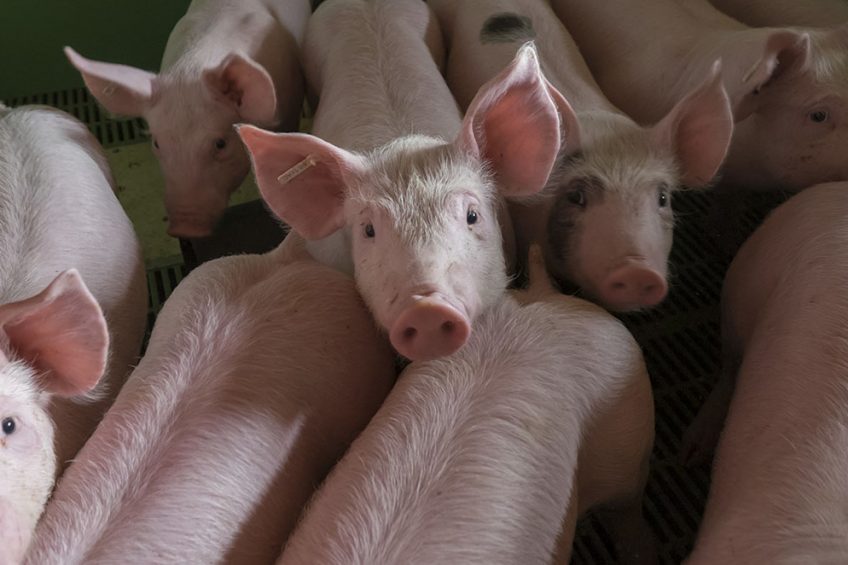Piglet vaccination: Key to PRRS control

Porcine respiratory and reproductive syndrome (PRRS) is still the most costly disease for the global swine industry. Successful vaccination of piglets can avoid some costly economic losses associated with the disease.
Recently, the impact of PRRS in a large European integrated company with 93,800 sows was evaluated. It was estimated that a PRRS-positive stable farm produces 26.2 weaned piglets/week/1,000 sows more compared to an PRRS-unstable farm. In other words, the impact of PRRS instability is 1.36 wean piglets/sow/year. In its respiratory phase, PRRS affects average daily gain (ADG), mortality rate, feed conversion rate (FCR) and antibiotic consumption in pigs. Economic losses caused by PRRS in growing animals are triggered because of its association with secondary pathogens such as swine influenza, M. Hyopneumoniae, A. pleuropneumoniae and Haemophilus parasuis, etc. SIP consultants estimated that following an outbreak, the cost of the disease can reach up to € 12.75 in growing pigs. PRRS control requires a global approach including health management, monitoring with diagnostics, biosecurity evaluation and with vaccination playing a fundamental role. Commercial vaccines offer partial virological and clinical protection since they cannot afford complete and universal protection. So, although vaccination does not necessarily provide full protection, it is useful as a means of PRRS control to reduce the impact of the disease.
Objectives of PRRS control
Ideally, the best situation would be to keep the farm negative to PRRS. However, important pig producing countries are positive to PRRS with high dense production areas making elimination of the disease almost impossible. Control, therefore, is the most feasible choice and the objective is to live with the enemy. The main objectives of PRRS control are firstly, herd stabilisation; keeping the breeding herd PRRS stable, minimising the risk of reinfection and avoiding the entrance of new strains into the farm and secondly, minimising productive losses. The use of modified live vaccines (MLV) to stabilise the breeding herd is a widespread practice to achieve stabilisation. There are huge differences among countries regarding vaccination, although there is a clear upward trend that confirms piglet vaccination as a complementary tool to control PRRS. Piglet vaccination aims to meet the following objectives:
- Herd immunisation: If just vaccinating breeding females, then part of the population of the farm is not well immunised. Therefore, vaccination of piglets provides a whole herd immunisation.
- Reduction of PRRS virus circulation: When vaccinating piglets, the number of susceptible animals and, consequently, the risk of virus recirculation, is reduced.
- Improve performance of nursery and fattening periods: PRRS affects productivity in the growing period due to its respiratory clinical disease. Following vaccination the performance is improved.
- Reduce economic losses: By means of vaccination the clinical impact of the disease is reduced and consequently, also the economic losses.
Piglet vaccination provides benefits to control the disease from a virology and clinical point of view. On the one hand, it reduces viraemia and shedding that helps to control infection pressure on the farm. Additionally, piglet vaccination reduces the reproductive rate (R0) which is the number of infected animals from one infected pig. The higher the R0, the more rapid transmission within a population. So, vaccines reduce R0 below 1 that helps to control viral transmission within a farm. On the other hand, piglet vaccination reduces lung lesions associated with PRRS, mortality and piglets treated with antibiotics. With the appropriate vaccination strategy, the productive parameters and the economic performance of the farm are improved.
Guidelines for piglet vaccination
To maximise the benefit of piglet vaccination, it’s important to bear in mind that development of immunity after vaccination requires at least 3 weeks. Moreover, maternal-derived antibodies delivered by colostrum can interfere with the vaccine. Furthermore, vaccination does not have a therapeutic effect, so vaccination of viraemic piglets should be revised. In this situation, the first objective is to stabilise the breeding herd and then, once the percentage of viraemic piglets is low, piglet vaccination can be considered again, see Figure 1.
Figure 1 – Development of PRRS immunity timeline.
The production system and the clinical situation of the farm are essential to define the vaccination strategy. For a reproductive outbreak, vaccinate and revaccinate all breeding animals including gilts 3-4 weeks apart. If a nursery is present, vaccination of all weaning piglets from 21 to 70 days of life is recommended in order to reduce field virus recirculation, infection pressure and minimise losses. In a farrow to finish or site 1 + 2 system and when PRRS problems occur in the nursery unit and is confirmed in the lab, vaccinate each batch of piglets at weaning (2-4 weeks of age) for at least 16 weeks. On a multisite system (site 2 or/and 3), if PRRS problems occur in the nursery unit and PRRS is confirmed in the lab, the guidelines are as follows:
- Unstable origin (PCR positive): Vaccinate each batch of piglets at weaning for at least 16 weeks.
- Stable origin (PCR negative): Only vaccinate piglets in case of high risk of PRRS infection (biosecurity audit).
- Unknown PRRS status: Vaccinate all piglets.
Vaccination monitoring programme
Hipra offers Together Against PRRS; a 16-week programme to control piglet vaccination which is based around 4 principles. First is analysis, in case of PRRS problems in the growing period, confirm in the lab that PRRS is involved and check the biosecurity by using an audit. Second there is vaccination, where each batch of piglets at weaning is vaccinated for at least 16 weeks. Third, monitoring, sample 15 piglets at weaning and 15 at the end of nursery, see Figure 2.
Figure 2 – Monitoring procedure in piglets.
PCRs and sequencing are run at the end of nursery with a 3-time sampling method: before vaccination and 8 and 16 weeks after vaccination. And lastly, data analysis, which is analysis of the key performance indicators such as ADG, FCR, mortality and antibiotics consumption. The Hipra Together Against PRRS piglets programme monitors the piglet vaccination and evaluates the reduction of virus circulation and the improvement of performance. The benefit of vaccinating piglets can then be quantified and the cost-benefit evaluated.
References available on request
Authors: L. de Lucas and J. Miranda, Hipra, Spain








